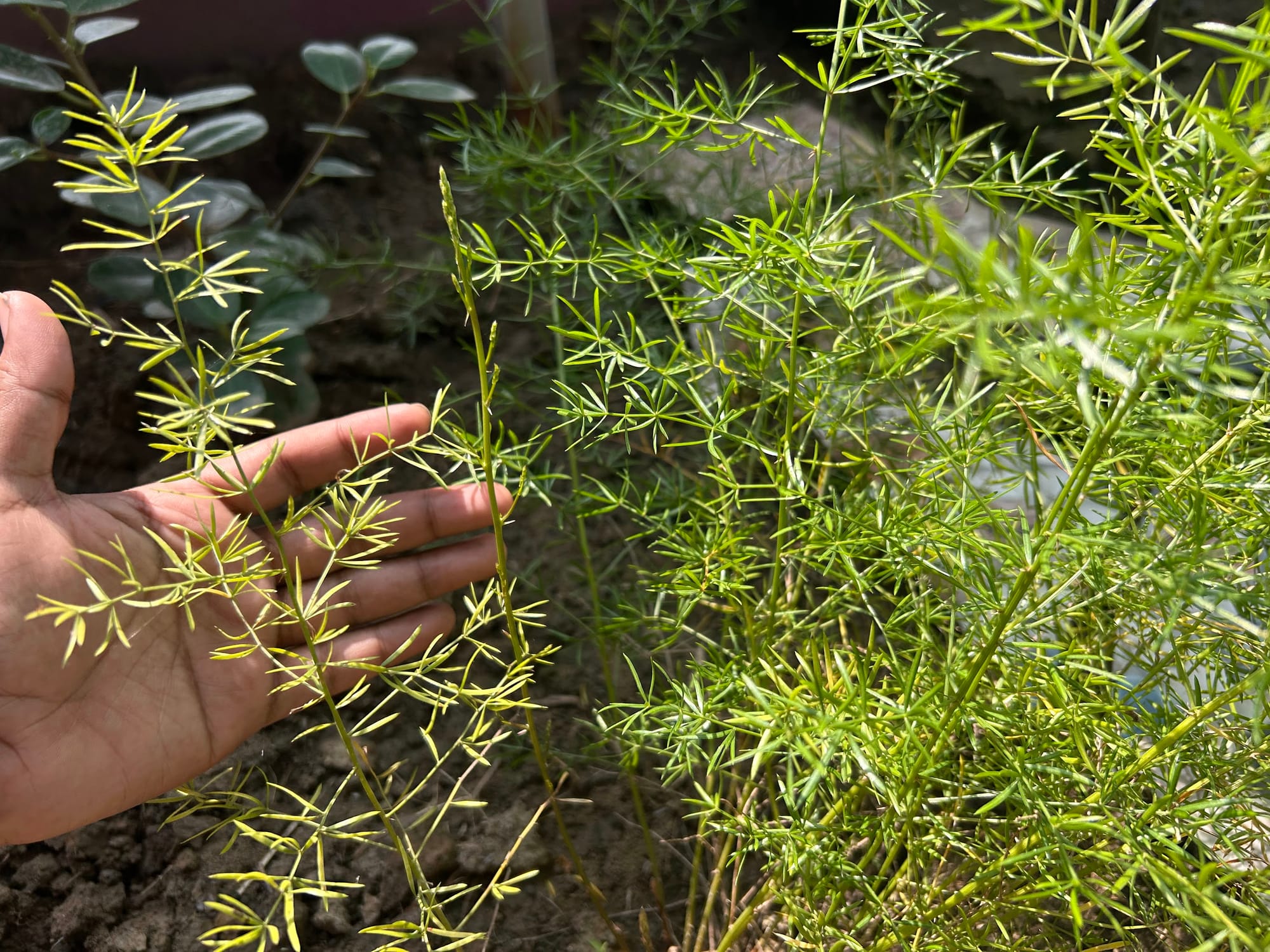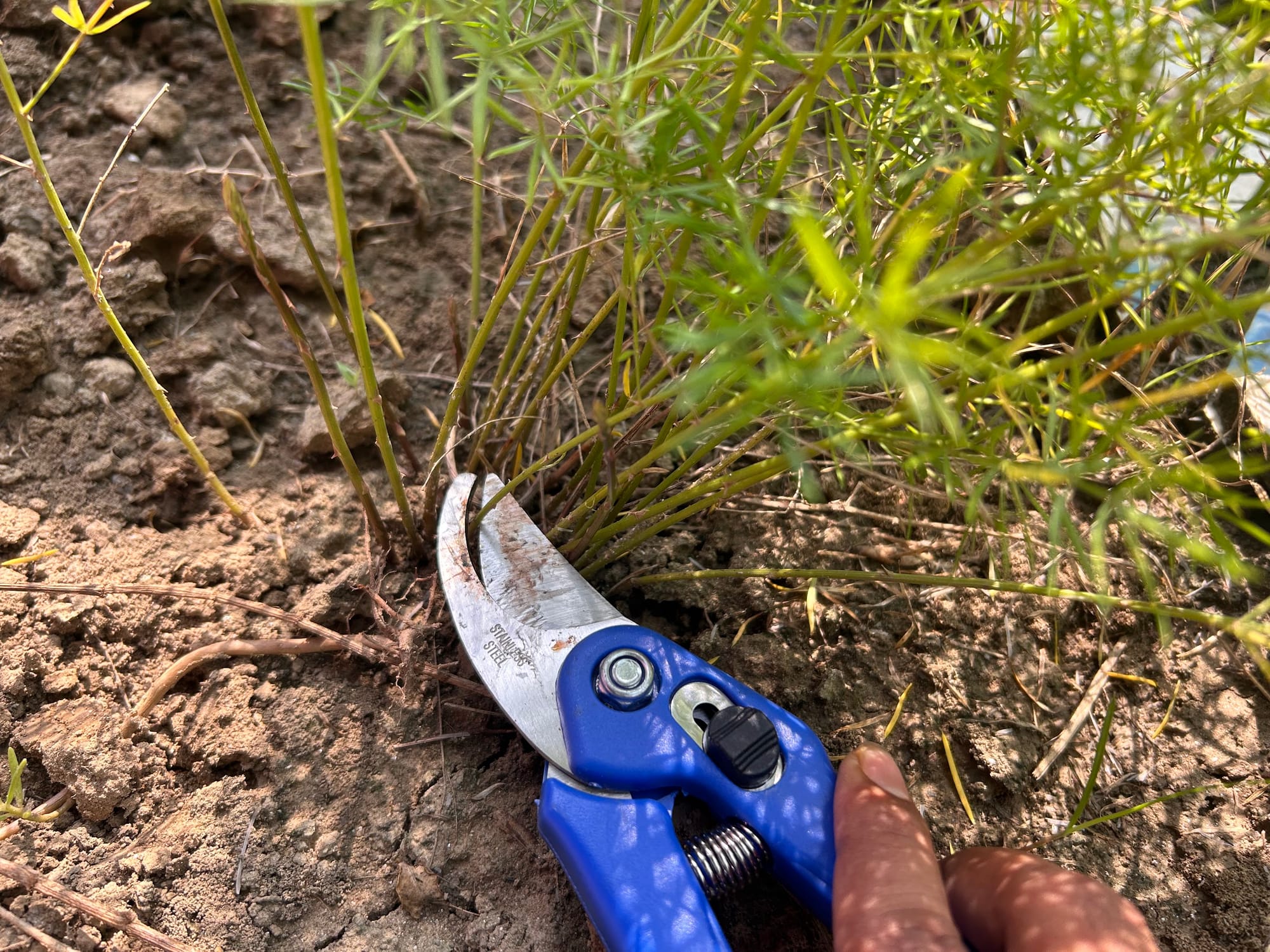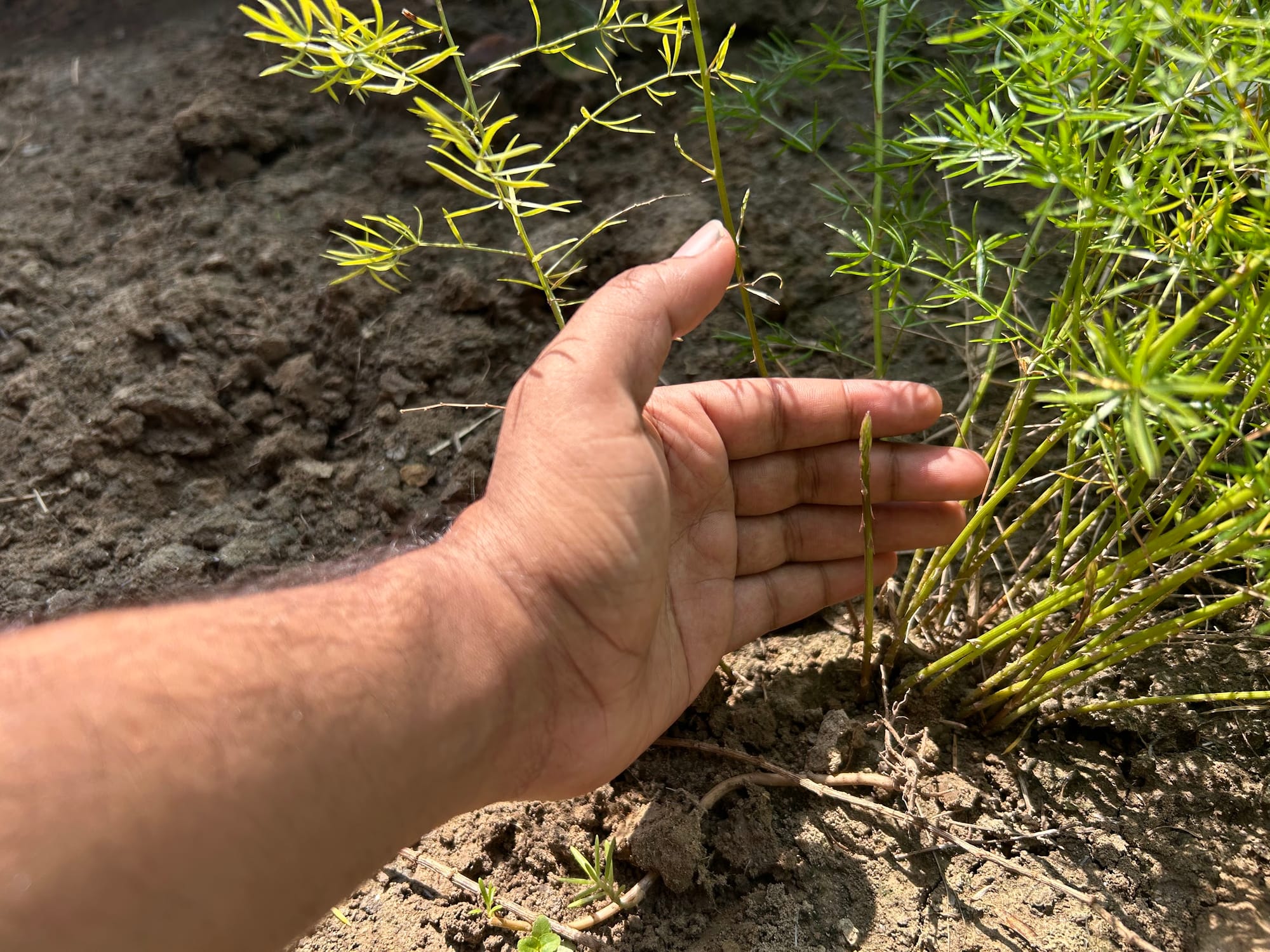
I have been harvesting asparagus since I was 17. I know that for the best harvesting results, we need proper fertilization, watering, soil, and pruning. But do you know among all these points, proper pruning or trimming at the proper time is the most important factor for asparagus harvesting? In this article, I will explain when to trim back asparagus and how it can improve asparagus harvesting effectively.
Those who are reading this article just to get the answer in a single line, here's your answer:
When you witness your asparagus ferns turning yellow in late fall to early winter, it is the best time to trim back asparagus.
But wait! If you are a gardening enthusiast and want to know WHY? Then the rest of the article is for you. I will suggest the best trimming guide along with my personal experiments to improve asparagus harvesting.
Understand the growth phases of Asparagus
I consider asparagus to be a unique perennial that grows in a different way than most other veggies. We need to understand its growth stages before we touch our asparagus to prune.
| Growth Stage | Time of Year | Description |
|---|---|---|
| Early Shoot Growth | Spring | Asparagus spears begin to emerge from the ground. Harvest period lasts about 6-8 weeks, after which spears are left to grow into ferns. |
| Fern Stage | Summer | Spears mature into tall, feathery ferns that store energy for the next season. This stage is essential for plant health and future yields. |
| Dormant Period | Late Fall to Winter | Ferns turn yellow and die back as nutrients are transferred to the roots. After the first frost, the ferns can be trimmed back to the ground. |
It is the winter or their dormancy phase when they transfer all their energy from yellow leaves to the ground and crowns.
When to trim back asparagus
This is what I do:
In the first year of my asparagus, I prune a few of my asparagus stems from the ground level to thin the bush. This helps me grow the rest of the stems healthier and reduces the chances of pest attacks and diseases.

As you can see in the above picture, after a few weeks of planting the asparagus, it started to grow in multiple numbers from the ground. If I let all the stems grow, it will decrease the harvesting. It's better to make the bush thinner by removing or trimming a few stems (from the ground level).

But do not trim these in the active growing season unless you get so many sticks from the ground. I am doing this to make the ferns less crowded.
Wait for the first winter and do not harvest in your first two years (You can start harvesting from the second year but you will get thin spears).
I usually leave them unharvested for the first two years. In the late fall to early winter, you can see the leaves and stems all are turning yellow. At that particular time, you should trim back all the ferns from the ground level. Do not uproot them, just trim them from the ground.
Don't worry, it will grow again when the winter is over.
Do you want to know why your asparagus spears are thin and small?
If you do not trim properly you will get thin spears like this:

This is because you did not trim them well. In the growing season, they spread their stems tall and make leaves like ferns. They collect sunlight and store the energy so that they can grow well in the next growing season when winter is over.
From their third dormancy, you should wait until all the leaves turn yellowish or brown and then trim back. It will make the new spears thicker and bigger than the last year.
After trimming is done, add some mulch or wood chips and water it. Even in dormancy, they need water.
Note: Trim the ferns in the growing season just to make the bush thinner, but in dormancy, trim all of them to store the energy for their next growing season.
If you are wondering why did I tell you to wait for the stems and leaves to turn yellow, here is your answer:
Yellow leaves in dormancy indicate that the energy-storing cycle by the ferns is completed successfully and they are ready to be pruned.
While harvesting, leave 20% of the spears to grow ferns. They will help to do photosynthesis.
If you like what you read and want to motivate me to write more, please subscribe to this site, It's free!
